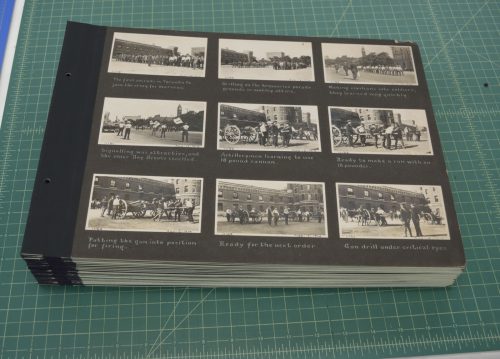
The purpose of our conservation activities is to prevent damage from happening to any of our records, and sometimes to repair items that have been torn or water damaged, for example. We try to make sure that the records in our collection will last for a very long time
A conservator uses his or her specialized training to apply treatments to damaged items, and to provide advice on how to avoid damage in the future
The Archives facility has very good environmental controls so that there is always an ideal level of temperature and humidity in our building. We use archival-quality envelopes and boxes, which are often custom-made, and keep our facility very clean
The best thing you can do is to handle items very carefully when you are looking at them in the Research Hall. Many of our items are fragile and brittle, and can be damaged very easily. Please follow the advice of our staff when it comes to wearing cotton gloves, or using pencils instead of pens, for example
Unfortunately, no. The conservator may be able to provide advice, but cannot provide treatments for anything outside of our collection.
Information about our conservation activities is often provided when tours and public events, such as Doors Open Toronto, are hosted at the Archives
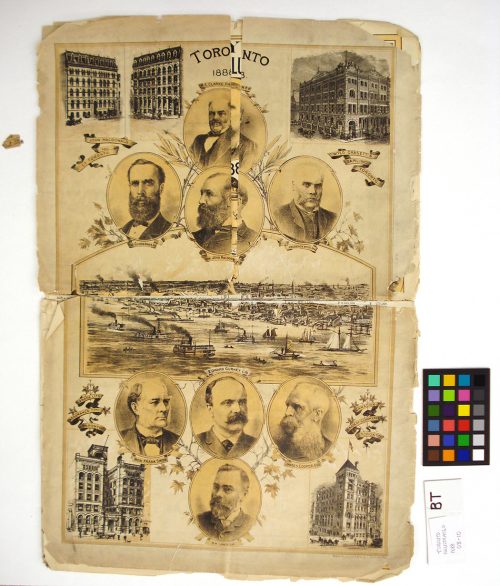
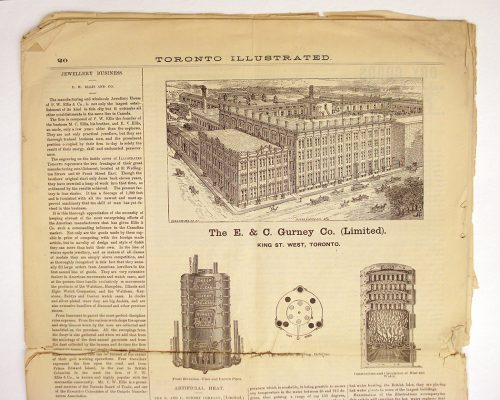

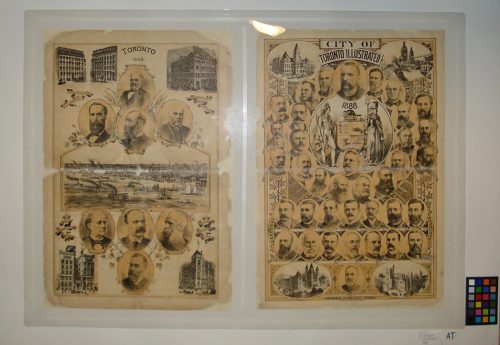
The photograph album was created by Toronto photographer John Boyd and features pictures he took from 1914 to 1917 of soldiers training for war before shipping out to join the Canadian Expeditionary Force.
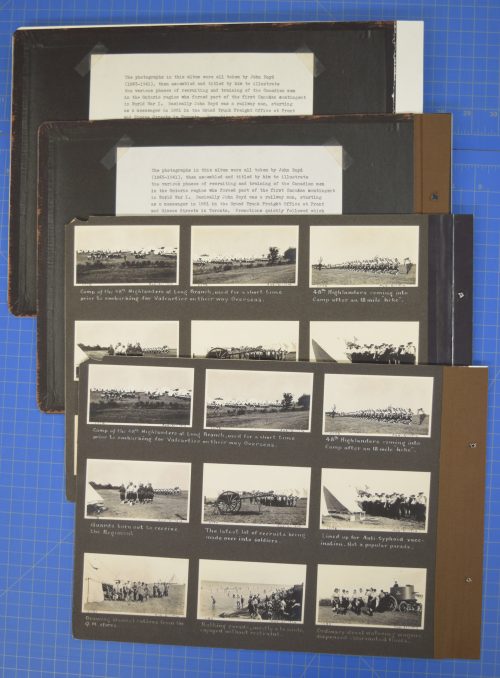
To preserve the fragile original, the Archives conservator created a duplicate copy for display in our Research Hall.
A few test pages were made to try and get the reproduction as close as possible to the original. Part of the problem was the fact that the album pages were double-sided. We didn’t want too dense a page, but it had to be sturdy enough for constant handling. The hinging was also an issue. It needed to be flexible, with the correct spacing to allow the album to open properly.
Once a solution was devised, it was an assembly-line process to cut out the pages, match them up, glue them to each other, and add tape as the flexible hinge. Seventy-six pages had to be cut out to create 39 album pages, plus the album covers.
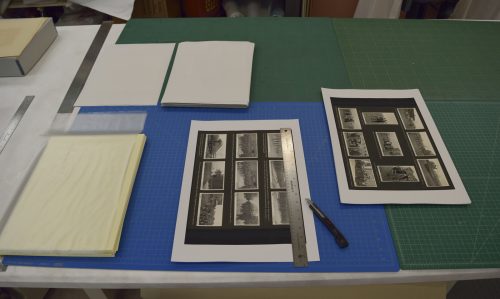
An album page is a sandwich layer composed of the image paper, dry mounting film, folder stock paper, dry mounting film, and image paper.
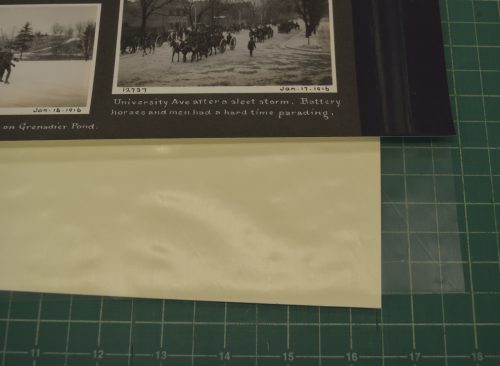
Here the completed pages have been hole-punched, and are ready to be assembled to the album covers.
